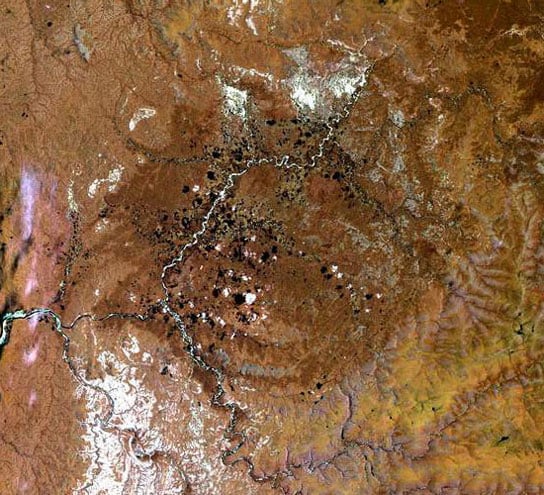Natural Earth Mined Diamonds vs Man Made Diamonds
The following 12 points places you in good stead when choosing to buy a diamond. It essentially alerts you to the differences between real natural earth mined diamonds and fake man made, lab grown synthetic crystals. Invest in real, not fake, invest in natural not unnatural, invest in quality not quantity, invest in diamond not CZ. Your beloved deserves real and not synthetic, deserves genuine not fake, deserve truth not lies, and since diamonds lasts forever, hopefully so will your relationship.1) Natural Earth Mined Diamonds are real diamonds, whereas, Made made diamonds are fake synthetic crystals.
2) Natural Earth Mined Diamonds are gifts from nature served-up from the Earths mantle, whereas Man Made Diamonds are created in a lab from Zirconium oxide powder.
3) The Earth's core forms organic diamonds which takes billions of years to form, whereas Labs grow fake Diamonds in a time of 1 and 6 weeks depending on the process used.
4) Natural Earth Mined Diamonds are the only gem stones that should be referred to a diamonds, whereas Man Made Diamonds should be referred to as engineered stones or cultured stones or just crystals.
5) Nature gifts us diamonds through kimberlite pipes or black magnetite and hematite. Lab created diamonds, are produced from zirconium oxide powder or graphite.
6) The conditions in which diamonds naturally develop when they are formed in the mantle is absolutely perfect, whereas Made made fake diamonds require a highly controlled laboratory environments with technological processes that closely simulate the conditions where natural diamonds grow.
7) Natural Earth Mined Diamonds are the hardest of substances and ideal for hard wearing jewelry, whereas Man Made Diamond is a carborundum quality substance ideal for making industrial abrasives.
8) Natural Earth Mined Diamonds are normally bigger and more often than not gem quality, whereas synthetically grown diamonds are grown to between 1 and 1.5 ct and more often than not abrasives material quality.
9) Gemstone quality Natural Earth Mined Diamonds form through natural processes, whereas gemstones quality Synthetic diamonds are grown by one of two processes, HPHT (High Pressure and High Temperature) or CVD (Chemical Vapor Deposition).
10) Natural Earth Mined Diamonds are graded by Gemology Institutes and are accompanied by certificates of authenticity, of late CVD Lab-Grown Diamonds are available with GIA Natural Diamond Certificates. This is equivalent selling a fake Rolex watch accompanied by genuine Rolex certificate of authenticity or certifying a corpse with proof of life. It's an unheard of paradox.
11) Natural Earth Mined diamonds are harder than synthetic lab diamonds. Diamonds measure 10 on the Mohr scale, whereas Lab diamonds measure 8.5 on the Mohr scale. That makes Lab diamonds as hard as Ruby and Emerald and Natural Earth Mined diamonds remains the king of hardness.
12) Natural Earth mined diamonds are known real or true diamonds, whereas lab diamonds are known as faux diamonds, fake diamonds, cubic zirconia , simulants, man made diamonds, synthetic diamonds, unnatural diamonds, laboratory-grown diamonds, none of which deserves to be called diamonds.
The IGL (International Gemological Laboratory), GIA (Gemological Institute Of America), AGS ((American Gem Society), EGL (European Gemological Laboratory) and the IGI (International Gemological Institute) are professional institutions run by qualified gemologists, geoscientists and mineralogists, all of whom abhor lab diamonds. So take their advice and steer clear of Zirconium powder which is more commonly used to make dentures and ceramic knives, moulds for molten metals, crucibles, and other refractory material.


